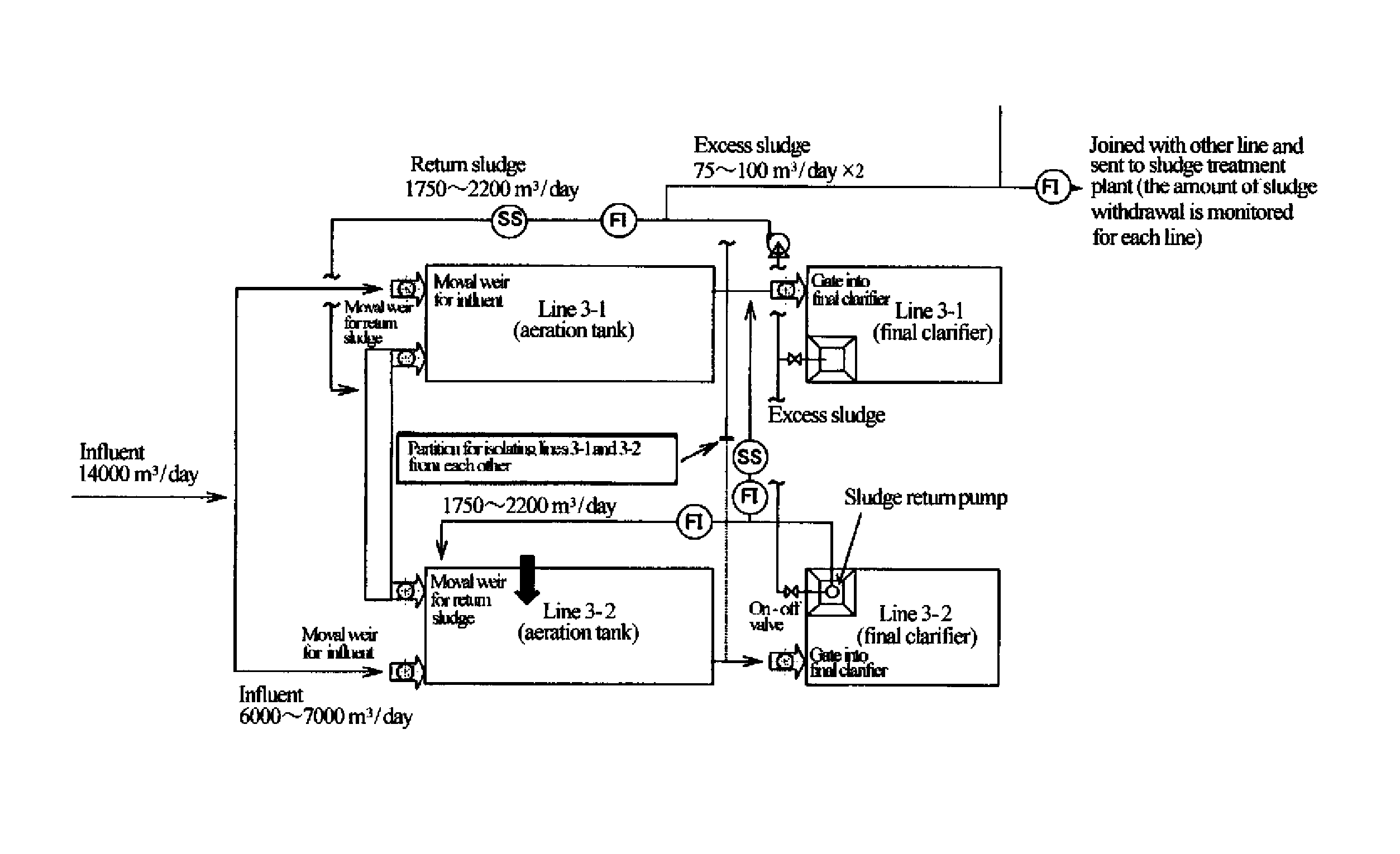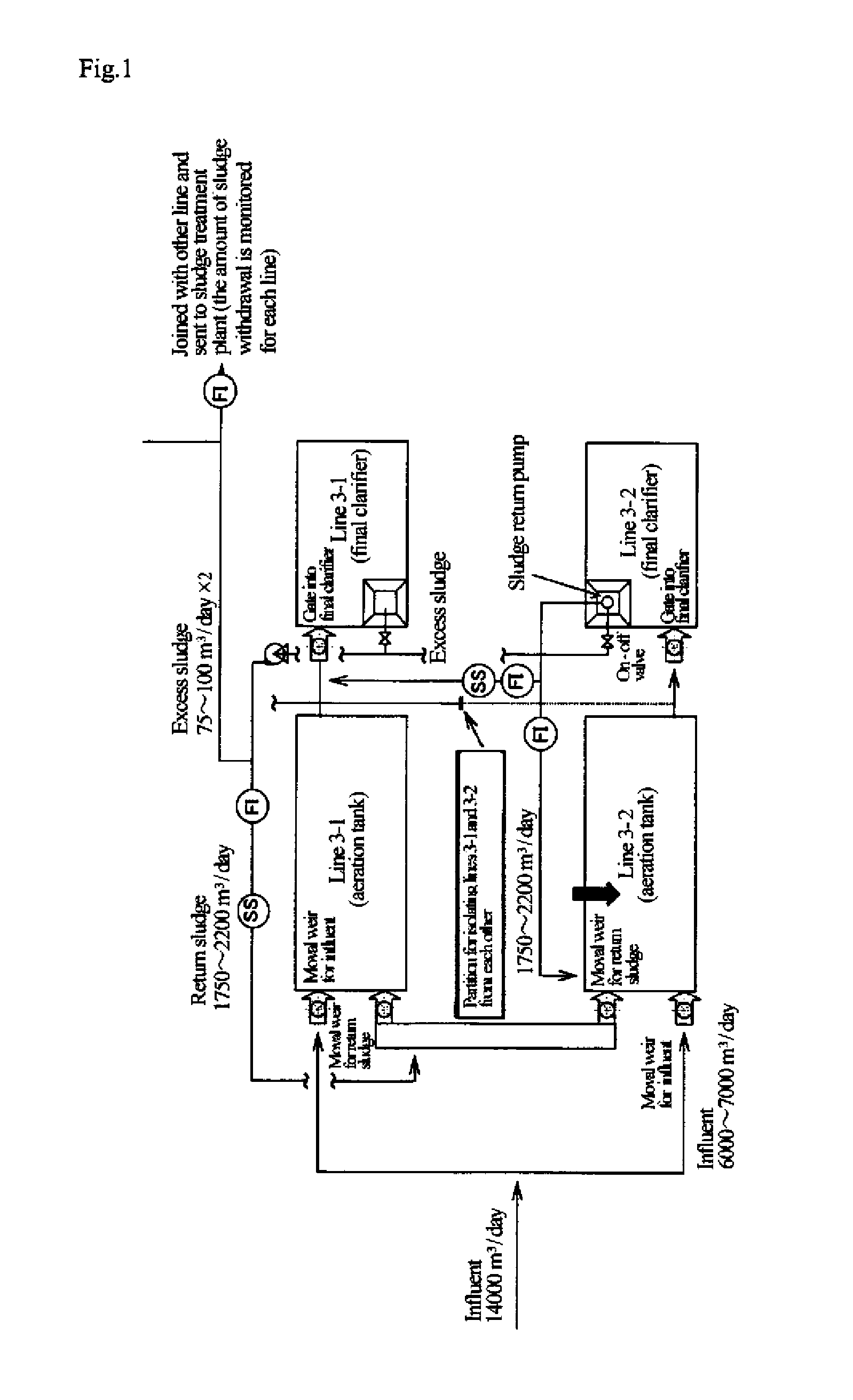Activated sludge material, method for reducing excess sludge production in bioreactor, and method of controlling bioreactor
a technology of activated sludge and bioreactor, which is applied in the direction of biological water/sewage treatment, waste water treatment from animal processing, enzymology, etc., can solve the problems of increasing the cost of sludge treatment year by year, reducing the amount of excess sludge, and reducing the amount of sludge produced. , the effect of suppressing the effect of sludge production
- Summary
- Abstract
- Description
- Claims
- Application Information
AI Technical Summary
Benefits of technology
Problems solved by technology
Method used
Image
Examples
example 1
[0063]Example 1 illustrates application of the invention to the bioreactor of a sewage treatment plant. As illustrated in FIG. 1, raw water influent into the sewage treatment plant was divided into nearly equal two portions. One half was introduced into a bioreactor (line 3-2, test line) to which an activated sludge material of the invention was to be added, and the other half was sent to an ordinary bioreactor (line 3-1, control line).
[0064]The activated sludge material used had a chitinase specific activity of 161.2 Units / g-MLSS, a pectinase specific activity of 121.3 Units / g-MLSS, a protease specific activity of 3.1 Units / g-MLSS, a cellulase specific activity of 15.1 Units / g-MLSS, and an amylase specific activity of 10.2 Units / g-MLSS. The activated sludge material was added to an aeration tank of the bioreactor of the test line (on May 21, 2007) in an amount of 0.6 vol % based on the quantity of the influent fed into the aeration tank and of 10 mass % based on the mass of the slu...
PUM
| Property | Measurement | Unit |
|---|---|---|
| concentration | aaaaa | aaaaa |
| mass | aaaaa | aaaaa |
| pressure | aaaaa | aaaaa |
Abstract
Description
Claims
Application Information
 Login to View More
Login to View More - R&D
- Intellectual Property
- Life Sciences
- Materials
- Tech Scout
- Unparalleled Data Quality
- Higher Quality Content
- 60% Fewer Hallucinations
Browse by: Latest US Patents, China's latest patents, Technical Efficacy Thesaurus, Application Domain, Technology Topic, Popular Technical Reports.
© 2025 PatSnap. All rights reserved.Legal|Privacy policy|Modern Slavery Act Transparency Statement|Sitemap|About US| Contact US: help@patsnap.com



